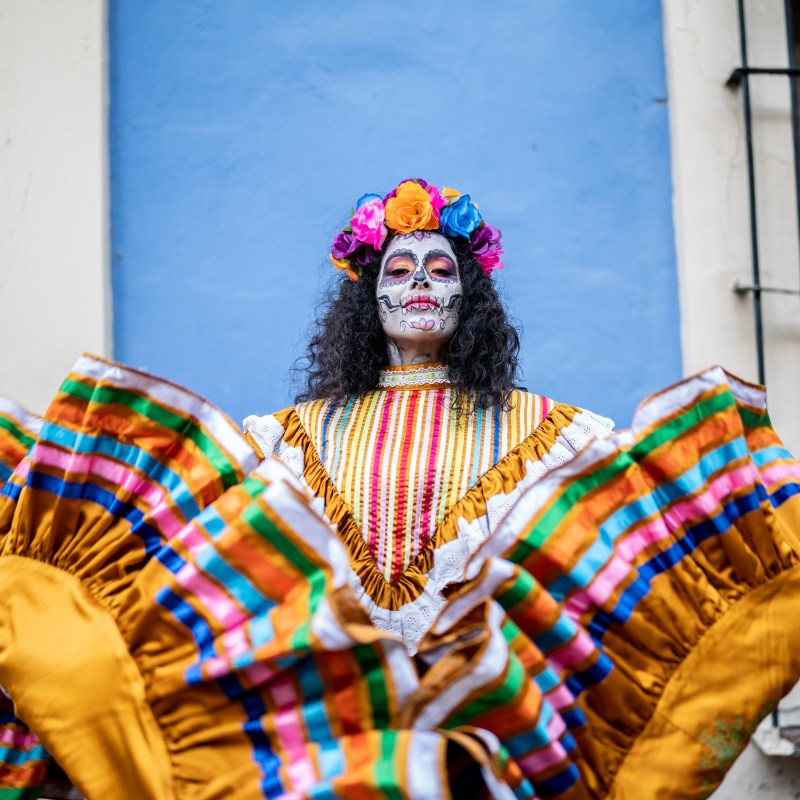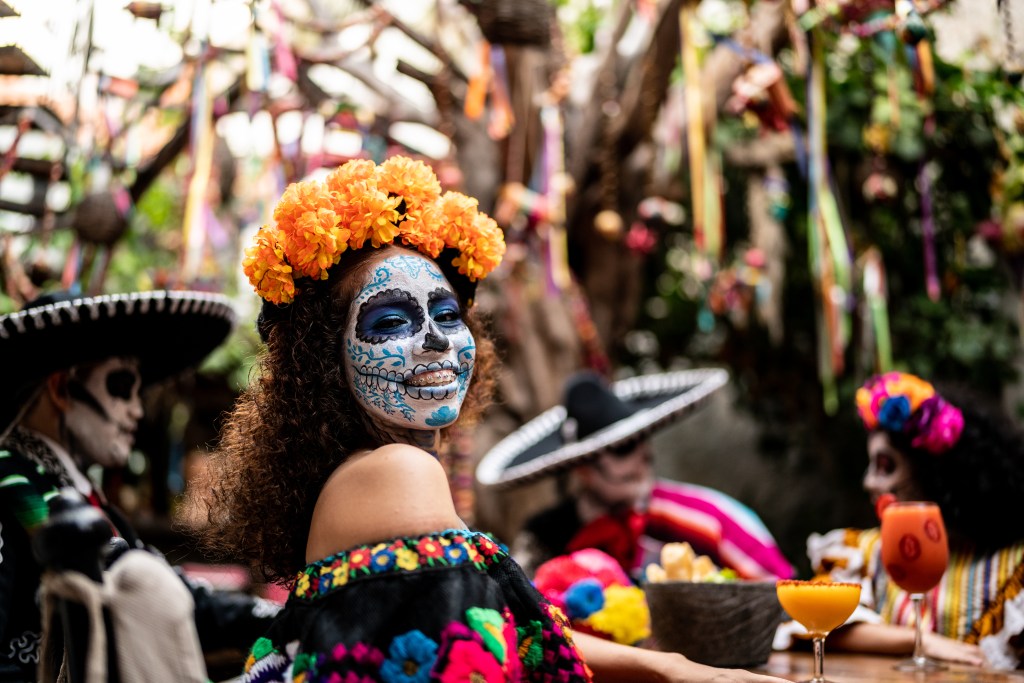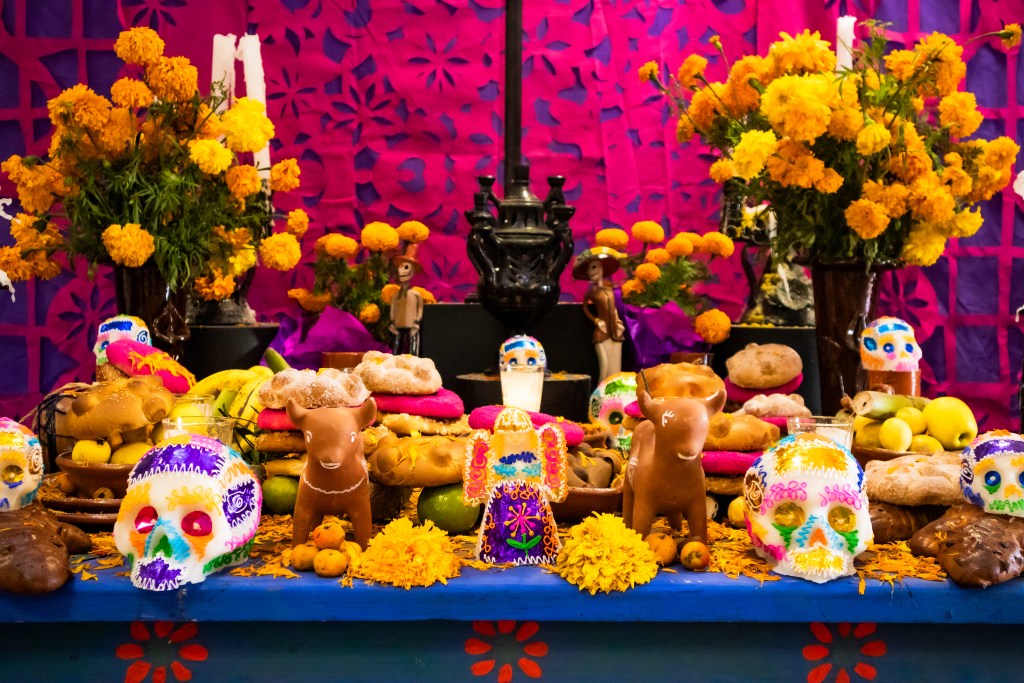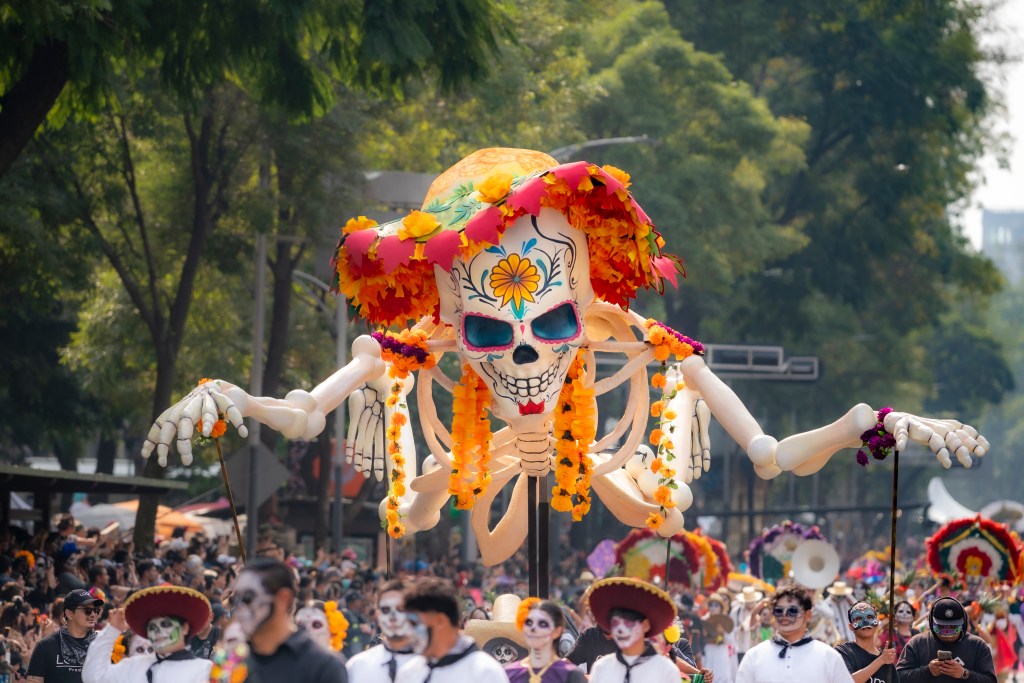
Day of the Dead, aka Dia de los Muertos in Spanish, takes place on November 1st and 2nd. It’s a blend between a cultural and religious holiday—one that many Americans are familiar with thanks to our neighbors in Mexico.
Videos by TravelAwaits
Day of the Dead is celebrated across Mexico and the United States as a way to honor and remember those who have passed on. It involves a mix of prayer, celebrations, and, in general, is a time for families and communities to gather together.
While it might sound somber, it’s really about feeling close to those who have died. The holiday falls on All Saints’ Day (November 1) and into All Souls’ Day (November 2), a time when spirits are said to be closer to us in the mundane world.
Even if you’ve never heard of the holiday or experienced it yourself, you probably recognize those brightly painted skulls, which are associated with the holiday. You might have even seen a few altars where Mexican families leave out candles, photos, marigolds, and treats for their departed loved ones.
In short, it’s an iconic, intriguing, and heartfelt celebration of life that revolves around death—which is quite the concept for many Americans who haven’t celebrated Day of the Dead before.
Looking for a little guide on how to celebrate Dia de los Muertos? Here’s your crash course list of dos and don’ts. They’ll set you up for success whether you’re heading to a full-on Dia de los Muertos festival or will be celebrating with your local community.
First up: There’s one ‘rule’ you should know. Traditionally, Dia de los Muertos celebrates people who have passed on over one year ago. So, if a loved one died a few months back, you would usually make offerings to them in the following year. That’s because it’s believed that souls take one year to pass on to the afterlife.
How to celebrate Day of the Dead: Dos & Don’ts
Do: Dress in honor of La Catrina, if you want to dress up

It’s not necessary to dress up for Dia de los Muertos—remember, it isn’t Mexican Halloween. However, if you want to dress up and look good like your Mexican familia, you can use La Catrina as a guide. La Catrina is an image of a well-dressed skeleton woman, which was first created in the early 1900s.
Since then, La Catrina has become a staple and symbol of Dia de los Muertos. If you want to dress up, use her style as a guide—meaning long, elegant dresses for women and button-ups for men. The goal is to look nice and respectable. Of course, you can also opt for skeleton face paint, if you want. But know that flowers are also symbolic and can be worn on the day, especially marigolds.
Don’t: Dress like it’s Halloween
If you’re going to dress up for Dia de los Muertos, don’t put on the first Halloween costume you see. Dia de los Muertos is about reuniting with those who have passed on—not horror, gore, or spooks. I’d also recommend avoiding any Dia de los Muertos Halloween costumes from general stores. They’re viewed as tacky and disingenuous, sort of like someone dressing up as a pilgrim to attend a Thanksgiving meal.
Do: Honor your own dead

Dia de los Muertos is a Mexican holiday, but honoring deceased loved ones is universal. If you feel touched by the celebrations, you can absolutely create your own ofrenda at home over the holiday. Usually, they include photos, flowers, memorabilia, candles, and other items that make you feel close to the person.
If you’re celebrating with your community, you can bring your own ofrenda to the festivities or make an offering to another ofrenda. Or you can simply reflect on your loved ones as you join other festivities. Remember: the idea to connect with those who have passed on—it’s really that simple.
Don’t: Alter or mess with ‘ofrendas’, where offerings are made
You can create your own ofrendas, and you might be invited to make an offering to another ofrenda at a festival if you know the person for whom it was made. However, you should never touch or alter an existing ofrenda. These are sacred spaces that families use to make offerings to their loved ones.
Do: Support vendors and performers

At many Dia de los Muertos festivals, you can watch dancing, processions, view large ofrendas, listen to stories about the holiday and loved ones who have passed on, and even purchase goods from vendors. You can absolutely join the ‘fun’ at a festival, so long as you’re following the dos and don’ts listed here.
Lots of festivals include vendors that sell their handmade goods—don’t feel weird about buying things on Dia de los Muertos. Similarly, don’t feel weird about watching processions and performances. The goal is to celebrate loved ones, reflect on their legacy, and otherwise come together. Maybe you also go home with a gorgeous, handmade piece.
Don’t: Take pictures willy-nilly
If you’ve been reading closely, you might be picking up on the fact that Dia de los Muertos is all about intention. Though the holiday is Mexican in origin, the concept of getting closer to our dearly departed friends and families is universal. But you might feel a bit confused about whether or not you can take pictures.
There’s no quick-and-easy answer on how to celebrate Day of the Dead, but I think a great piece of advice is to consider who you’re photographing. Do they know they might be photographed, such as in a procession or performance? Or are they quietly reflecting or grieving before an ofrenda? If it’s the latter, it’s not the right time to snap a picture.
